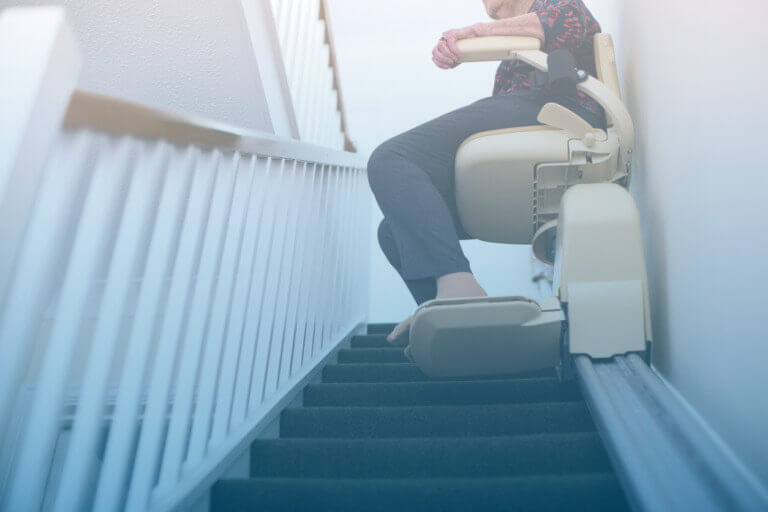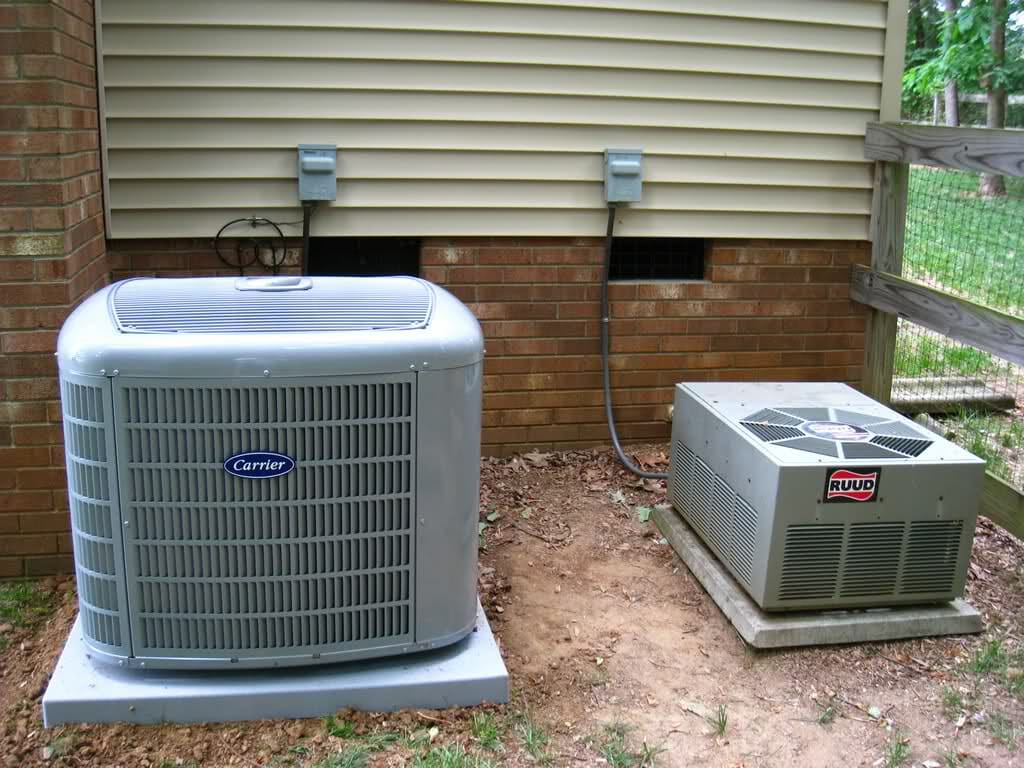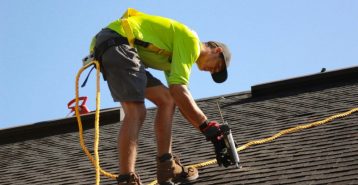Are you doing a stairlifts project?
Modernize can pair you with three to four pros in your area, so you can compare options and save time and money.

Modernize partners with an extensive network of the most reputable home improvement contractors in the U.S. We have collaborated with an expert for the topic on this page, in order to share expert tips, guidance, and information on your home improvement project.
Michael Peck
Vice President of Installation, Leaf Home Safety Solutions
According to the National Council on Aging. the majority of people today want to live in their home as long as possible. In fact, 9 out of 10 seniors plan to live in their own homes for the next 5 to 10 years. But when it’s no longer as easy to move around or do things for yourself, staying in your own home might become difficult. Fortunately, home accessibility options exist, including additions like stair lifts.
These days, people are living longer. In fact, the life expectancy of 68 years back in 1960 has jumped to an impressive 79 years of age in 2017, according to the Population Reference Bureau. But that extra decade tacked onto life expectancy in the United States comes with some challenges, such as a growing rate of obesity among ages 60 and older. This can mean more medical problems, which can necessitate close attention to home accessibility for those who want to continue living at home.
One important aspect of home accessibility is the ease of moving from one room to another. If you have a home with more than one level, how will you safely access the upper floor? Stair lifts provide a safe solution to that problem. To learn more about how stair lifts work and their benefits for elderly homeowners, we interviewed home safety solutions expert Michael Peck of Leaf Home Safety Solutions for this article.
How Do Stairlifts Work?
Stairlifts might seem complicated, but how they actually work is pretty straightforward. A stairlift is a chair that travels along a track or rail. This rail is mounted to a stairway. The chair’s movement is powered by a motor in the base of the chair. The motor turns gears that are firmly seated within the geared strip on the track or rail. With the push of a button or the flick of a switch, the motor kicks on, and the gears begin to turn. This moves the chair up or down the stairs.
Whether you live in an apartment, condo, single-family home or duplex, the majority of us live in a multi-story environment. For this reason, a stairlift is one of the most common parts of an aging in place plan. Consisting of a rail system, chassis and chair, stairlifts are available for all most kinds of staircases: straight staircases, 180-degree staircases, 90-degree staircases, staircases with landings and even many basement staircases.
According to Peck, stair lifts are built for indoor use but many companies also offer outdoor stairlift solutions. Stairlifts should be very easy to operate and require little to no maintenance. Most run on a battery that is charged when not in use so they are available during most power outages. However, most stairlifts do require the user to be able to maintain a seated position with legs bent and fall within certain weight ratings. Stairlifts do require time to travel. So, using them to access the bedroom or laundry area might be preferable depending upon them to access the toilet if timing is a concern.
Parts of a Stairlift
To better understand how a stairlift works, you’ll need to understand how each component fits together. You might find a variety of bells and whistles in a stairlift, but the basics are always going to be the same. Here’s what you can expect.
- Seat. This is the heart of the system. The chair seat should be comfortable and large enough to accommodate those who will use it. Some models have folding seats that help minimize the space the stairlift takes up.
- Armrests. These lift up or down to make it easier to get into the chair. This is also where the movement control of the chair is located.
- Seat belt. This is an absolute must for the person using the chair. They must be buckled in to avoid the potential for a dangerous or even deadly fall.
- Foot rest. This makes the chair more comfortable and provides some stability for the user. Many foot rests have sensors in them that will stop the chair’s motion if it hits anything on the stairs. They fold up when not in use.
- Track. This might also be called a “rail” but regardless of the name, it serves the same purpose: to support the geared strip that moves the chair up and down the stairway.
- Track extensions. Also known as overruns, these are extensions to the main track that will allow you to move the chair beyond the stairs to a landing, where a person can get out of the chair without worries about falling down the stairs.
- Power supply. Most stairlifts are battery-powered. You’ll need to have a ready power supply through a typical outlet to keep the batteries charged. Some stairlifts run on power from the home with backup batteries; in that case, you might need a dedicated outlet for the stairlift.
- Switch or button. This will be located on the arm of the chair. It allows you to control the movement of the chair while sending it up or down the stairs.
- Motor. This sits underneath the chair seat and attaches to the gears. It’s what runs the stairlift up and down the track or rail.
- Battery. Batteries are found underneath the chair seat too. In most models, these batteries will last for years with proper charging and maintenance. Even if the chair is hard-wired to the electrical system, the batteries will still be there in the event of a power outage.
- Battery charger. Speaking of charging, the charger for those batteries is usually located at the lower end of the track. Most of them work automatically as the chair rests at that location while not in use.
- “Call” or “Send” controls. These are controls separate from the chair itself, usually mounted on the wall at each end of the track. This allows the user to call the chair up or down when needed. This can also be used to carry items up and down the stairs, like a basket of laundry. It can also be used to hide the chair away at the top of the stairs if you don’t like the way it looks when kept downstairs, or you need the extra space for foot traffic.
Safety First When Operating a Stairlift
Staying safe when on a stairlift is of utmost importance. That’s why it’s so important to follow these rules when using one:
- Ensure the seat is locked into place. Lift the armrests if necessary.
- Stand with the back of your knees touching the seat. Then lower yourself down slowly.
- Manually fold the footrest down (unless your model comes with an automatic footrest).
- Lock the armrests into place for better security.
- Latch the seat belt and make sure it is firmly around your waist.
- Press the button or flip the switch. Keep your hand on it in case you need to stop it in an emergency, such as a pet running down the stairs toward the chair.
- When you reach your destination, swivel the chair until it locks into place in a direction that will allow you to exit safely.
- If you ever feel as though your chairlift is not safe, call the manufacturer or a contractor for assistance.
Let us help you with your aging in place concerns. Modernize can connect you with contractors in your local area who can not only help you with the installation of a stairlift, but might be able to modify your home in other ways to help ensure your safety. To learn more about aging in place and ways to improve your home accessibility, check out the National Institute on Aging.
Find the Right Contractor for Your Stairlifts Project
Whether you’re ready to begin your project now or need some expert advice, our network of contractors are here to help. With a few simple questions, we’ll find the best local professionals for you
Making a Decision on a Stairlift
A stairlift is a great solution for any elderly or mobility-challenged person living at home. According to Peck, it ultimately comes down to a decision and investment in safety:
When deciding on the right stairlift for your needs, Peck recommends starting by asking the following questions:
- What is your home’s layout? Will the floor plan change in the future?
- Is there a possibility for single-floor living, or multi-floor access a must?
- What type of staircases are in your home?
When looking for a reliable and quality home safety contractor, Peck advises the following:
Ensure the contractor has referrals, licenses, insurance and bonds. Also ask what additional skills or training they possess that helps them understand your situation and aging in place needs. A good example is training provided by the National Association of Home Builders called a Certified Aging in Place Specialist, or C.A.P.S.
Peck also advises considering their product offerings and availability. Stair lifts are important for our loved ones. Do we want to wait 8 to 12 weeks for our solution or are there solutions available now? What about financing and who is paying for these safety improvements? Does the contractor have options that work into your budget, or a fixed income budget of your loved one? While these are all factors that need to be considered, the reality is that to truly be prepared, we should start the process sooner rather than later.
If you are looking for the best home safety solutions provider, Modernize partners with professionals like Leaf Home Safety Solutions and other reputable brands to help you with your next stairlift or home accessibility project. Browse our contractors and find the best price and pro for your project.
Find the Right Contractor for Your Stairlifts Project
Whether you’re ready to begin your project now or need some expert advice, our network of contractors are here to help. With a few simple questions, we’ll find the best local professionals for you
Reviews from Real Homeowners
Welcome to Homeowner Resources! We are the Modernize blog. Modernize pairs more than 3 million homeowners a year with pre-vetted contractors in their area. This blog started because we believe homeowners should know everything about their homes, from how their HVAC works to which front door colors they might love. On Homeowner Resources, you can find information on every part of your home, right down to how you can negotiate with contractors to get the best price. Here's more about the blog.
Need a contractor? Learn more about how Modernize finds the right pro for you.





